When it comes to roofing types materials, there are a variety of options available that all come with their own advantages and disadvantages. From asphalt shingles and metal roofing to clay tiles, wood shingles, and slate roofing tiles – each has its pros and cons depending on the application. In this article we’ll explore these different materials in detail so you can make an informed decision when selecting your next roof type. We will discuss the cost effectiveness, durability as well as aesthetic appeal of each material to help guide you towards making the right choice for your needs!
Table of Contents:
- Asphalt Shingles
- Metal Roofing
- Clay and Concrete Tiles
- Wood Shingles and Shakes
- Slate Roofing Tiles
- FAQs in Relation to Roofing Types
- Conclusion
Asphalt Shingles
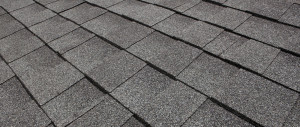
Installation: Installing an asphalt shingle roof requires some knowledge and experience working with this type of material; however it is generally considered one of the easiest types of roofs for DIYers who want to tackle the job themselves without professional help. It is important that all steps are followed carefully when installing an asphalt shingle roof including laying down felt paper before applying the actual shingles for extra protection against moisture infiltration into your home’s structure below the surface layer.
Regular inspections should be done at least twice per year (spring and fall) to look for signs such as loose nails, cracked or missing individual pieces, curling, cupping, or blistering. These could indicate potential problems requiring repair or replacement before further damage occurs inside your house due to water infiltration through these areas left unchecked over time.
Advantages: Asphalt shingles are a popular roofing material choice due to their affordability, durability, and ease of installation. They come in a variety of colors and styles that can be matched to the existing architecture or design of any home. Asphalt shingles are also relatively lightweight compared to other materials such as slate or clay tiles, making them easier to install on most roofs. Additionally, asphalt shingles require minimal maintenance over time and have an average lifespan of 20-30 years with proper care.
Disadvantages: One disadvantage of asphalt shingle roofing is that it may not last as long as some other materials if not properly maintained or installed correctly. Additionally, asphalt shingle roofs tend to be more susceptible to damage from extreme weather conditions like hail or high winds than other types of roofing materials. Furthermore, they do not provide much insulation against heat loss in cold climates since they absorb heat easily during the summer months but don’t retain it well in winter temperatures.
In summary
Advantages of Asphalt Shingles:
- Affordability
- Durability
- Easy to install
- Available in various colors and styles
- Lightweight
- Minimal maintenance required
- Average lifespan of 20-30 years with proper care
Disadvantages of Asphalt Shingles:
- May not last as long as other materials if not properly maintained or installed
- Susceptible to damage from extreme weather conditions
- Poor insulation against heat loss in cold climates
Asphalt shingles are a popular roofing choice due to their affordability and easy installation. However, they require regular maintenance and have a shorter lifespan than other materials. Now let’s take a look at metal roofing!
Metal Roofing
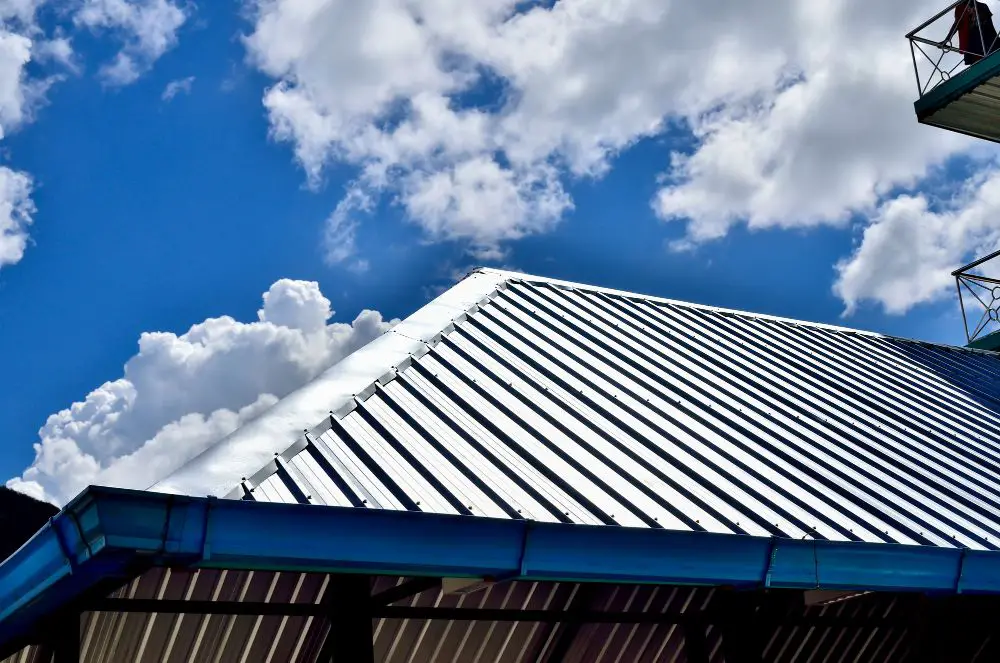
Metal roofing is a popular choice for residential roofs due to its durability and low-maintenance requirements. It can last up to 50 years with proper maintenance, making it an attractive option for homeowners looking for long-term value.
Installing a metal roof requires special tools such as shears or snips which must be used carefully by experienced professionals in order to ensure that the panels fit together properly on your home’s structure without gaps or overlaps between them, which could lead to water leakage problems down the road if not corrected before completion of installation process. Professional installers will also use fasteners specifically designed for use with metal panel systems in order secure each panel into place properly so they remain securely attached throughout their lifetime on your home’s structure.
Maintenance requirements vary depending on the type of material chosen, but generally speaking metal panels require minimal upkeep once installed correctly onto your home’s structure. Depending upon the location where you live, it may require periodic cleaning using a mild soap solution followed by rinsing off all surfaces thoroughly using a garden hose equipped with a spray nozzle attachment set at the lowest pressure setting possible. If necessary, you should inspect the condition around seams periodically since this area tends to accumulate dirt more readily than flat portions located elsewhere across the surface area. Any signs of corrosion should be immediately addressed through application of a rust inhibitor product available from your local hardware store.
Advantages: Metal roofing has many advantages over other types of roofing materials. It is lightweight yet strong, fire resistant, energy efficient, and can be installed quickly and easily. Metal roofs are also highly durable and able to withstand extreme weather conditions such as hail storms or high winds without sustaining damage. Additionally, metal roofs come in a variety of colors and styles that can complement any home’s exterior design aesthetic.
Disadvantages: While metal roofing does have many benefits, there are some drawbacks as well. The cost of installation may be higher than other types of roofing materials due to the specialized tools needed for installation and the need for professional labor costs associated with installing metal roofs correctly. In addition, metal roofs tend to be noisier than other types of roofing during rainstorms or when snow slides off them during winter months.
In Summary
Advantages of Metal Roofing:
- Durability
- Low-maintenance requirements
- Can last up to 50 years with proper maintenance
- Lightweight yet strong
- Fire resistant
- Energy efficient
- Can be installed quickly and easily
- Highly durable and able to withstand extreme weather conditions
- Available in various colors and styles
Disadvantages of Metal Roofing:
- May be more expensive to install due to specialized tools and professional labor costs
- Noisier than other roofing materials during rain or when snow slides off during winter months
Metal roofing is a durable and cost-effective option for many homeowners, but its installation requires expertise and specialized tools. Clay and concrete tiles offer another type of roofing solution with their own set of advantages and disadvantages to consider.
Clay and Concrete Tiles
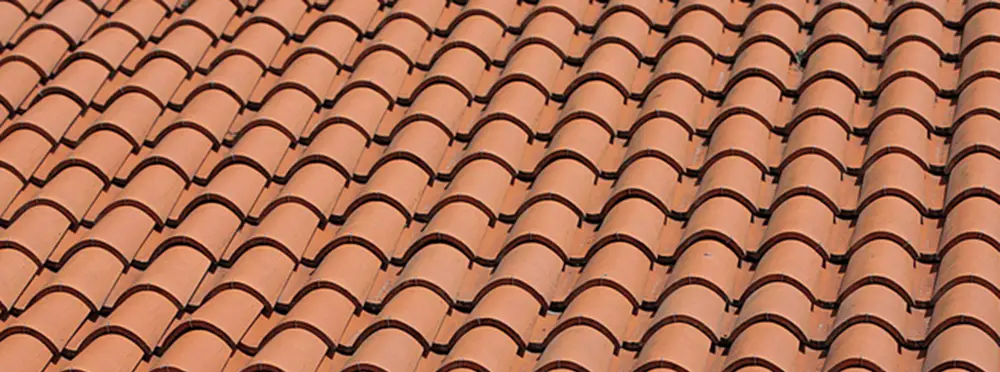
Clay and concrete tiles are an attractive option for residential roofs that offer durability and protection from the elements. Clay and concrete tiles come in a variety of shapes, sizes, colors, textures, and styles to suit any home’s design.
Installation: Installing clay or concrete tile requires special tools such as hammers drills saws levels etc., along with safety gear like hard hats goggles gloves boots etc.. Before starting the installation make sure you have all necessary permits from your local municipality then begin by laying out the pattern on the ground using chalk lines following manufacturer’s instructions . Next install underlayment felt paper followed by flashing around chimneys skylights vents etc.. Finally install battens if needed before nailing down each individual tile making sure they are secure yet not overly tight so they don’t crack due to expansion/contraction cycles caused by temperature changes throughout the year .
Once installed properly, clay/concrete tile will last up to 50 years without much maintenance required beyond occasional cleaning with a mild soap and water solution applied via soft brush then rinsed off with a garden hose. If moss, lichen, or algae buildup occurs, use a commercial cleaner specifically designed for this purpose but avoid pressure washers at all costs since high pressure could damage the surface causing premature deterioration resulting in costly repairs later on down the road.
Advantages: Clay and concrete tiles have many advantages over other roofing materials. They are fireproof, resistant to strong winds, hail-resistant, long-lasting (up to 50 years or more), energy efficient (they reflect sunlight which helps keep homes cooler during hot summer months), low maintenance (only need occasional cleaning) ,and aesthetically pleasing. Additionally they can add value to your home due to their longevity and attractive appearance.
Disadvantages: The main disadvantage of clay or concrete tile is its cost; it is usually more expensive than asphalt shingles or metal roofing systems. It also requires specialized installation skills which may require hiring a professional contractor with experience installing this type of material as well as access equipment such as scaffolding or lifts for higher pitched roofs . In addition there may be local building codes that must be adhered too when installing this type of roof system so check with your local municipality before beginning any project .
In Summary
Advantages of Clay and Concrete Tiles:
- Attractive
- Durable and protective from the elements
- Available in various shapes, sizes, colors, textures, and styles
- Fireproof
- Resistant to strong winds and hail
- Long-lasting (up to 50 years or more)
- Energy efficient (reflects sunlight, helping to keep homes cooler)
- Low maintenance (only need occasional cleaning)
- Can add value to your home
Disadvantages of Clay and Concrete Tiles:
- More expensive than other roofing materials
- Requires specialized installation skills and equipment
- May need to hire a professional contractor
- May be subject to local building codes.
Clay and concrete tiles are a popular choice for roofing due to their durability, but they can be difficult to install and require regular maintenance. Wood shingles and shakes offer an alternative option with different advantages and disadvantages that should also be considered.
Wood Shingles and Shakes
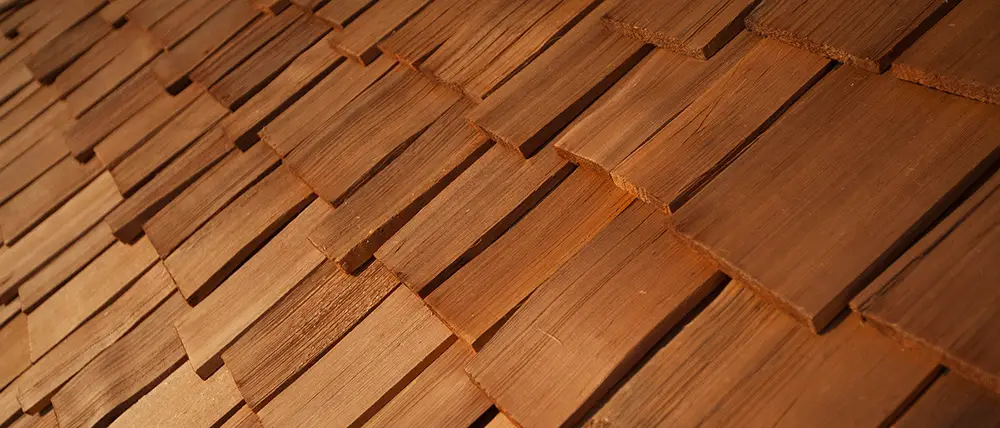
Wood shingles and shakes are a classic roofing material that can add charm to any home or building. Wood shingles and shakes have been used for centuries, providing both beauty and durability.
Installation: Installing a new wooden roof requires special skills and knowledge about proper installation techniques in order to ensure its longevity and effectiveness against weather elements such as rain or snowfall throughout the year . It’s important that all nails used should be galvanized steel so they won’t rust away quickly due to moisture exposure from rainwater runoff . In addition , flashing should also be installed around chimneys , skylights , vents etc., in order for watertight sealant between different surfaces . Lastly , installing drip edge along eaves will help prevent water damage by directing runoff away from walls .
Proper maintenance of your wooden roof is essential in order for it to last long-term without needing frequent repairs. This includes checking periodically for signs of wear such as broken pieces, cracked edges etc., cleaning off debris like leaves and twigs after storms, and ensuring gutters remain clear and unclogged at all times so water doesn’t pool near foundation walls causing potential structural damage down the line. Furthermore, applying a protective coating every few years helps protect against ultraviolet radiation and prevents premature aging caused by sun exposure too.
Advantages: Wood shingles and shakes offer several advantages over other roof materials. They are aesthetically pleasing, with a natural look that blends in well with the surrounding environment. Additionally, wood is highly durable when properly maintained, lasting up to 30 years or more depending on the type of wood used. It also provides excellent insulation against heat loss during winter months as well as protection from UV rays during summer months. Finally, wood is an environmentally friendly option since it is renewable resource that can be recycled at the end of its life cycle.
Disadvantages: Despite their many benefits, there are some drawbacks associated with using wood shingles and shakes for your roof. One major disadvantage is cost; while they may initially be cheaper than other materials such as metal or slate tiles, they require regular maintenance which can become costly over time if not done correctly or regularly enough. Additionally, they do not provide much fire resistance compared to other materials like asphalt or metal roofs due to their combustible nature when exposed to high temperatures.
In Summary
Advantages of Wood Shingles and Shakes:
- Aesthetic appeal
- Durable when properly maintained
- Provides excellent insulation against heat loss and protection from UV rays
- Environmentally friendly (renewable resource that can be recycled)
Disadvantages of Wood Shingles and Shakes:
- May be more expensive due to regular maintenance
- Lack of fire resistance compared to other materials
Wood shingles and shakes are a great option for those looking for a traditional, rustic look to their roof. They require some maintenance but offer good protection from the elements. Now let’s take a closer look at slate roofing tiles, which have become increasingly popular in recent years.
Slate Roofing Tiles
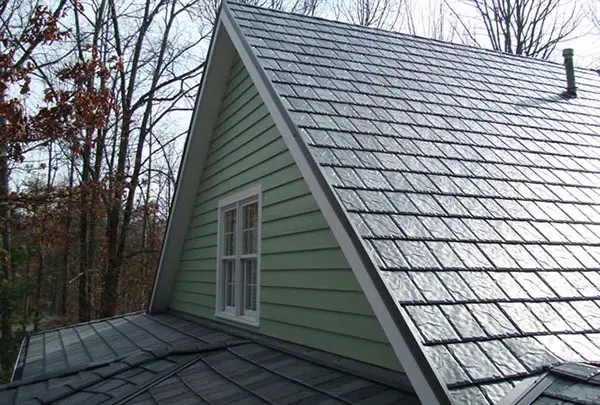
Slate Roofing Tiles are a popular choice for roofing due to their durability and aesthetic appeal. They have been used in construction since the Roman Empire, and continue to be a preferred material today.
Installation: Installing slate tile roofs requires specialized knowledge and experience due to its weight and fragility when compared with other types of roofing materials like asphalt shingle or metal panel systems. It’s important that all components including flashing around chimneys and vents are properly installed before laying down the first course of slates so that water does not penetrate into your attic space over time causing costly damages from mold growth etc.. A qualified contractor should always install these roofs whenever possible unless you have extensive experience working with this material yourself .
Slate tile roofs require regular maintenance such as cleaning off debris after storms or checking for broken pieces during inspections every few years. Overall, there isn’t much else needed besides occasional patch-ups here and there depending on how long you plan on keeping them installed on your property. If left untreated, however, moss buildup could occur over time leading to premature deterioration if not taken care of promptly.
Advantages: Slate tiles offer superior protection from the elements, as they are highly resistant to wind, hail, fire and water damage. Additionally, slate is one of the longest lasting materials available for roofing; it can last up to 100 years with proper maintenance. It also has an attractive appearance that adds value to any home or building.
Disadvantages: The main disadvantage of slate tiles is their cost; they tend to be more expensive than other types of roofing materials such as asphalt shingles or metal panels. In addition, because slate is a natural stone product it can be difficult to find matching pieces if repairs need to be made at some point in time. Finally, installation requires special skills which may require hiring professional contractors who specialize in this type of work.
In Summary
Advantages of Slate Roofing Tiles:
- Durability
- Aesthetic appeal
- Highly resistant to wind, hail, fire, and water damage
- Long-lasting (up to 100 years with proper maintenance)
- Adds value to any home or building
Disadvantages of Slate Roofing Tiles:
- More expensive than other roofing materials
- May be difficult to find matching pieces for repairs
- Requires special skills and professional contractors for installation.
FAQs in Relation to Roofing Types
What are the 4 main types of residential roofing?
This is the most common type of residential roofing material, made from a combination of asphalt and fiberglass or organic materials. It is durable, affordable, and easy to install.
2. Metal Roofs: Metal roofs are becoming increasingly popular due to their durability and energy efficiency benefits. They come in various styles such as standing seam metal roofs or corrugated metal panels that can be installed over existing shingles for added protection against the elements.
3. Tile Roofs: Tile roofs offer an attractive look with long-lasting performance that makes them a great choice for homes in warm climates where temperatures fluctuate widely throughout the year. They are also fire resistant and provide excellent insulation properties when properly installed by a professional roofer.
4 Slate Roofs: Slate roofs have been used since ancient times because they last longer than any other roofing material available today – up to 100 years! They are extremely durable but require special installation techniques due to their weight so it’s important to hire an experienced contractor if you decide on this option for your home’s roofing needs
What are 5 common roofing systems?
These are the most common type of roofing system and provide good protection from the elements. They are relatively easy to install, affordable, and come in a variety of colors and styles.
2. Metal Roofs: Metal roofs offer superior durability and can last up to 50 years with minimal maintenance required. They are also fire-resistant, energy efficient, lightweight, and environmentally friendly options for homeowners looking for an alternative to traditional shingle roofs.
3. Tile Roofs: Tile roofs provide excellent insulation properties while still allowing air flow through them which helps keep your home cool during hot summer months. They also require little maintenance over their lifetime but can be expensive upfront due to the cost of materials needed for installation as well as labor costs associated with it.
4. Flat Roofs: Flat roofs are popular among commercial buildings due to their low cost compared to other types of roofing systems such as sloped or pitched ones that require more material and labor costs associated with them when installing them on a building structure . Additionally they have great water drainage capabilities making them ideal for areas prone to heavy rainfall or snowfall accumulation during winter months .
5 Wood Shake/Shingle Roofs: Wood shake/shingle roofs offer a unique look that is often sought after by many homeowners who want something different than what asphalt shingles typically offer . This type of roof requires regular maintenance in order maintain its beauty , however it is known for being one of the longest lasting roofing systems available today if properly taken care off throughout its lifetime .
What are types of roofs?
There are many types of roofs available, each with its own unique characteristics and advantages. The most common roofing materials include asphalt shingles, metal roofing, tile or slate roofing, wood shakes and shingles, rubber membrane roofs and green roofs. Asphalt shingle roofs are the most popular choice due to their affordability and ease of installation. Metal roof systems offer superior durability and energy efficiency while tile or slate provide a more traditional look. Wood shakes and shingles offer a classic appearance but require regular maintenance to prevent rot or insect damage. Rubber membrane roofs provide excellent waterproof protection for flat surfaces while green roofs can help reduce cooling costs in hot climates by providing insulation from the sun’s rays.
Conclusion
In conclusion, roofing types can vary greatly depending on the type of building and climate. Asphalt shingles are one of the most popular roofing materials due to their affordability and durability. Metal roofs offer a more modern look with increased energy efficiency. Clay and concrete tiles provide an attractive, long-lasting option for homeowners in warm climates. Wood shingles and shakes offer a classic look but require regular maintenance to prevent rot or decay. Finally, slate roofing tiles provide superior protection from extreme weather conditions but come at a higher cost than other materials. No matter which type of roof you choose, it is important to consider all factors before making your decision so that you can ensure your home has the best possible protection against the elements for years to come!
